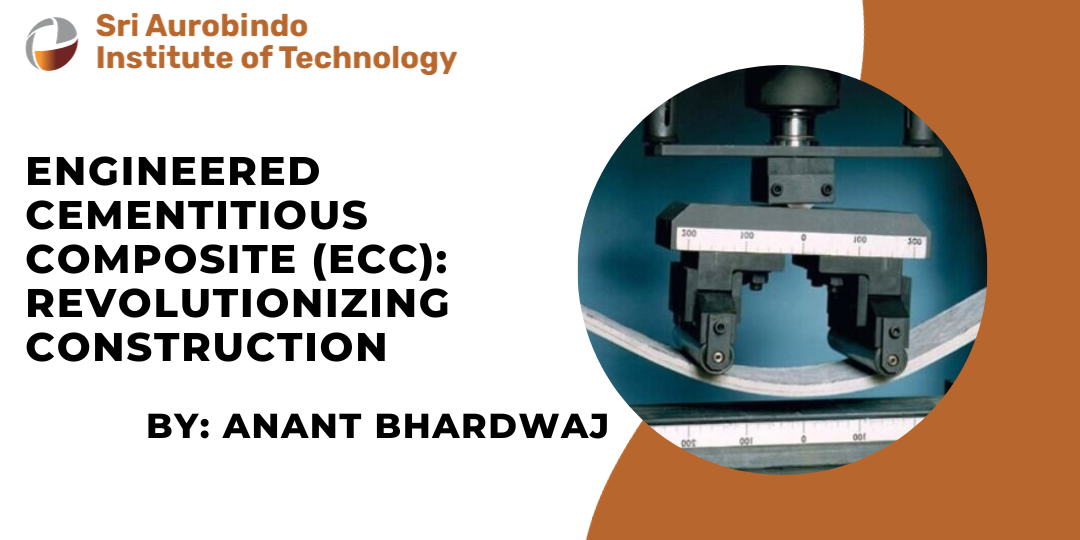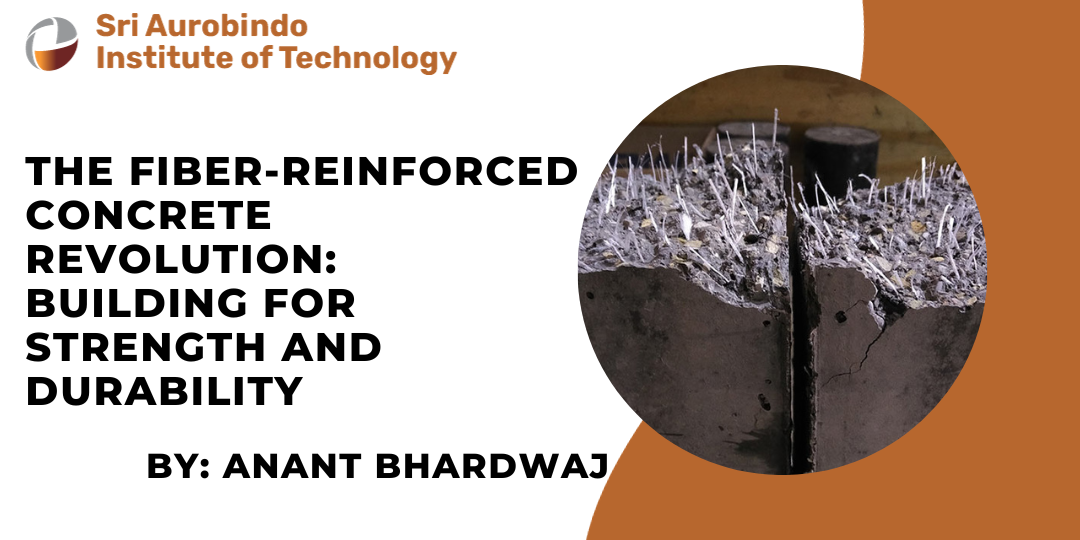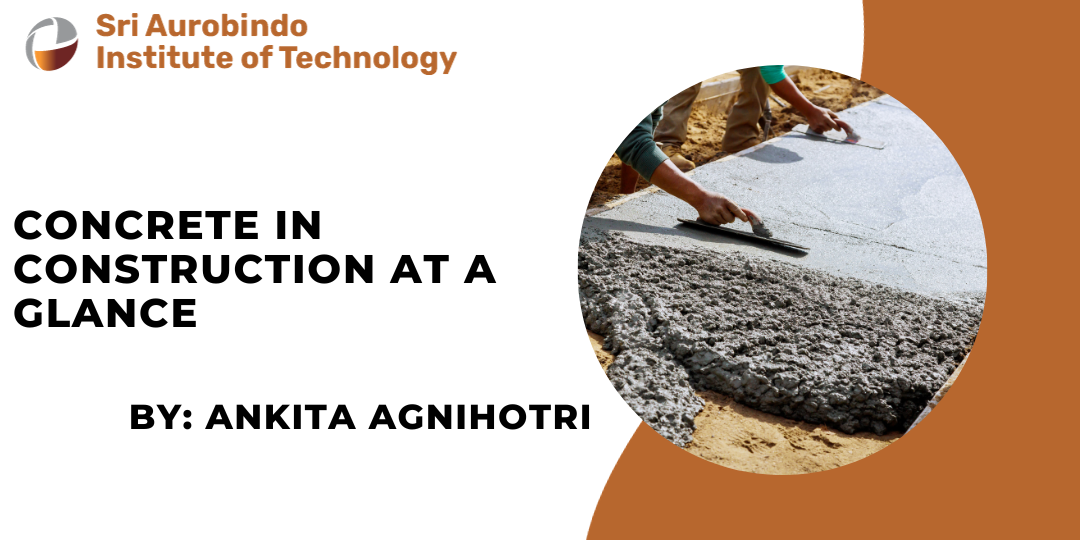The FRC Revolution: Building for Strength and Durability
Concrete has been the backbone of construction for centuries, providing a sturdy foundation for our built environment. But in the quest for...
3 min read
 Anant Bhardwaj
:
October 1, 2023
Anant Bhardwaj
:
October 1, 2023

In the world of construction materials, innovation is the key to building safer, more resilient, and sustainable structures. Engineered Cementitious Composite (ECC) is a cutting-edge material that has been making waves in the construction industry.
ECC is not just another type of concrete; it's a game-changer that offers remarkable durability, flexibility, and sustainability. In this blog post, we'll delve into into the world of ECC and explore and how it's transforming the way we build. Engineered Cementitious Composites (ECC) are a type of concrete that are reinforced with short, randomly selected fibers.
Engineered Cementitious Composite, often referred to as ECC or bendable concrete, is a high-performance construction material that was developed in the early 1990s.
Unlike conventional concrete, ECC is engineered at the microstructural level to exhibit exceptional ductility and strain-hardening properties. These characteristics allow ECC to bend without breaking, making it an ideal choice for various construction applications.
ECCs are a high-performance fiber reinforced cementitious composites (HPFRCC). They are known for their tensile strain-hardening behavior and tensile ductility. ECCs have a strain capacity of 3-7%, compared to 0.01% for ordinary Portland cement (OPC).
ECCs are made up of cement, mineral admixtures, fine aggregates, water, superplasticizers, and up to 2% fibers. They are known for their high ductility and toughness.
ECCs are different from ordinary concrete and fiber reinforced concrete (FRC) because they are not brittle. Ordinary concrete is prone to cracking and failure under strain and long-term use.

In 2005, a 225-mm thick ECC bridge deck was completed on interstate 94 in Michigan. The deck used less material than a proposed deck made of ordinary portland cement. ECC, by fundamentally eliminating concrete brittleness, has opened a new world of applications in bridge decks and other structures.
The discussion on the properties of ECC under various mechanical and environmental loading conditions has provided insights on why the ductile behavior of ECC can lead to the durable and sustainable (i.e., low environmental impact) performance of ECC repair and new construction systems.
ECC technology is still evolving, which includes the design of different version of ECC materials, the creation of smart and multifunctional ECCs, the understanding of their behavior under combined mechanical and environmental conditions, the establishment of reliable ECC constitutive models under complex loading, and development of ECC structural design specifications and codes for the wide application of this material in civil infrastructure.
Engineered cementitious composites (ECC) and fiber reinforced concrete (FRC) are both cement-based materials that include fibers, sand, water, and chemical additives. The main difference between the two is the type and volume of fibers used. ECC uses small volumes of synthetic PVA (polyvinyl alcohol) fibers, while FRC uses large volumes of large AR glass fibers.
ECC is known for its strain-hardening behavior and high tensile capacity. It has a distinct ductile behavior and is resistant to cracks and damage. FRC has improved properties including high compressive strength, flexural strength, ductility, toughness, energy absorption capacity, and electrical conductivity.
ECC can undergo significant deformation without fracturing. It can bend and stretch, much like rubber or steel, which makes it extremely resilient against cracking, even under heavy loads or seismic activity.
ECC has a longer lifespan compared to traditional concrete. Its ability to resist cracking and damage due to environmental factors, such as freeze-thaw cycles and chemical exposure, ensures structures built with ECC remain robust over time.

ECC exhibits impressive tensile strength, which means it can withstand substantial pulling or stretching forces. This property makes it suitable for applications where traditional concrete would fail.
ECC has the ability to self-heal small cracks, further enhancing its durability. When exposed to moisture, the material can fill microcracks with calcium carbonate, mitigating potential issues.
Here are some of the most common applications of ECC:
ECC is an excellent choice for building bridges and highway structures, where flexibility and durability are crucial. It can absorb the movement and vibrations caused by heavy traffic and seismic events, reducing maintenance needs and increasing safety.

ECC is being used in the construction of high-rise buildings, especially in earthquake-prone regions. Its ability to withstand seismic forces makes it a reliable choice for structural elements like columns and beams.
ECC's resistance to chloride penetration and superior durability make it suitable for marine applications, such as seawalls, docks, and underwater structures.
ECC can also be used for repairing and retrofitting existing structures. Its compatibility with traditional concrete and ease of application makes it a viable solution for extending the life of aging infrastructure.
ECC not only offers structural advantages but also contributes to sustainability in construction:

While ECC has shown immense promise, it also faces challenges, including cost and widespread adoption. However, ongoing research is focused on reducing production costs and expanding its use in various construction applications.
Engineering Cementitious Composite (ECC) represents a significant advancement in construction materials, offering unparalleled flexibility, durability, and sustainability. As the construction industry continues to evolve and prioritize safety and environmental concerns, ECC is poised to play a crucial role in shaping the buildings and infrastructures of the future.
It's unique properties have the potential to revolutionize the way we construct, making our structures safer, more resilient, and environmentally friendly. As ECC technology continues to develop and gain acceptance, it holds the promise of building a more sustainable and resilient world.

Concrete has been the backbone of construction for centuries, providing a sturdy foundation for our built environment. But in the quest for...

Embarking on a career in construction is an exciting and rewarding journey, especially when you choose the path of civil engineering. Civil engineers...

The Foundation of Modern Building Concrete is the backbone of modern construction, playing a pivotal role in shaping our urban landscapes. Its...